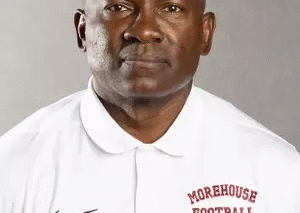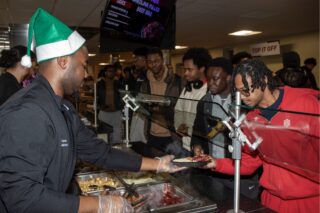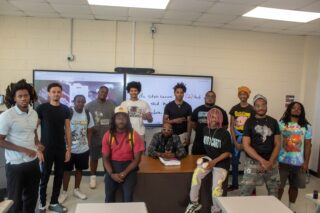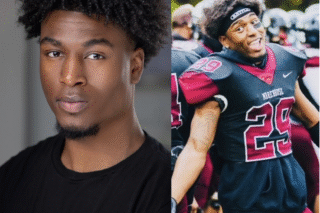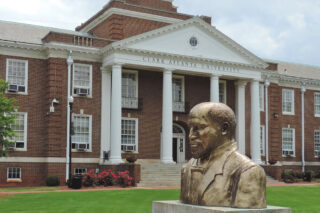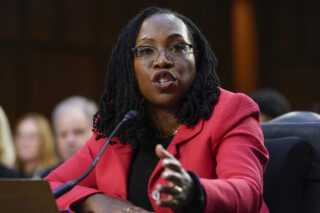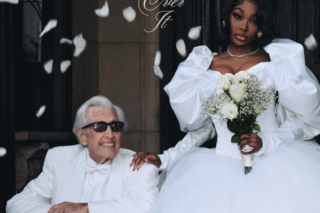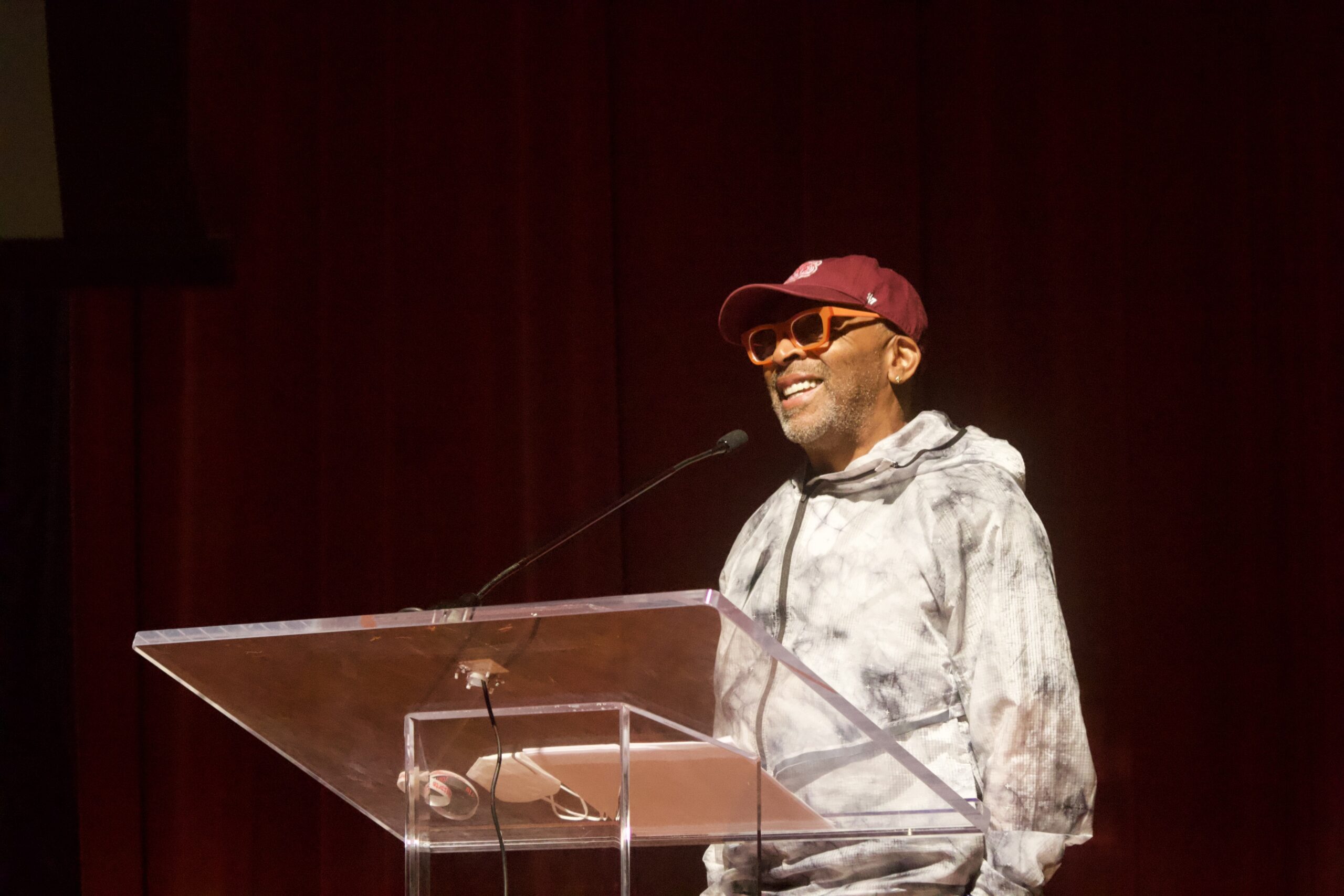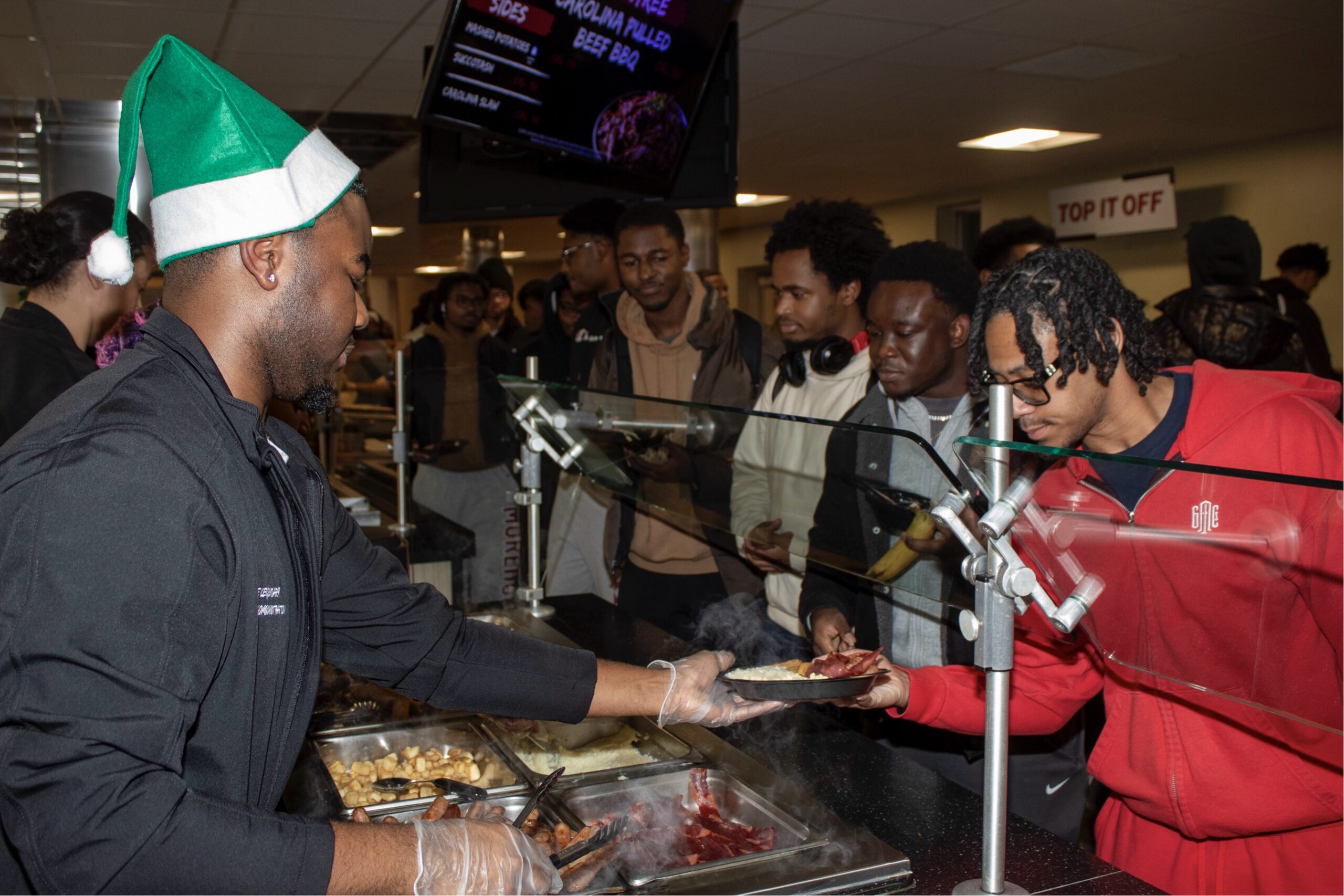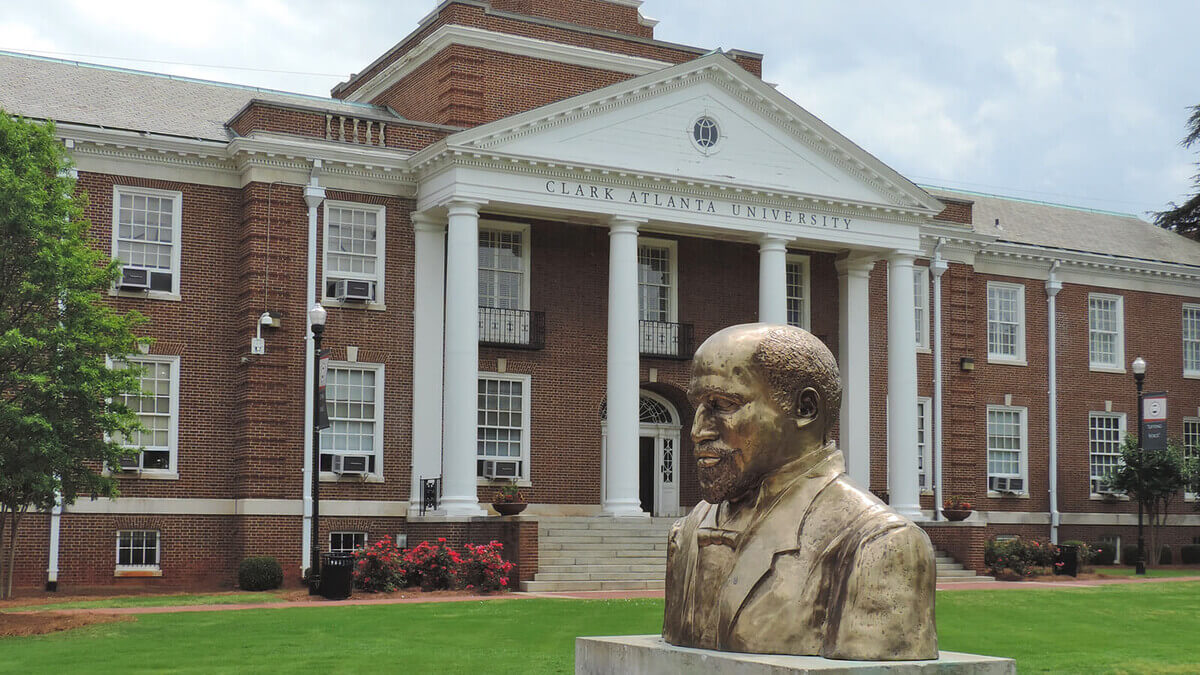Photo taken by Chris Doomes.
By Patrick Darrington, Campus News Editor
Famed filmmaker Spike Lee ’79 made a special appearance at Morehouse. A very
busy man, Lee made time on Sept. 14 to address students involved with the Journalism
program and The Maroon Tiger. The occasion? No, not a new film rollout, but rather an event
for the new Bachelor of Arts program for Journalism in Sports, Culture and Social Justice.
After 11 years as a minor, the Journalism program was approved to become a 10-course major
by the Morehouse Board of Trustees in July of 2021. In addition to passing six required courses
with a C or better, students can now choose one of three tracks – sports journalism, arts and
culture, or social justice journalism – for their last four courses. These changes have permitted a
more comprehensive curriculum that students can engage in and build a broader set of skills
useful in the media industry.
“It was important for us to become a major because in doing so we were able to expand the
curriculum to appeal to a broader base of students,” said Ron Thomas, the director for the
Journalism program. “It just makes journalism more of an integral part of academic offerings
here at Morehouse.”
The program also has given students many off-campus experiential learning opportunities such
as attending professional journalism conferences, covering sports and political events, and
reporting from abroad from Cuba, Ghana and Ecuador.
The program was co-founded by Lee and his late friend Ralph Wiley, explaining Lee’s
appearance at the Ray Charles Performing Arts Center. Wiley, one of the first black sports
columnists employed at a white-owned newspaper, along with Lee noticed a disparity in the
amount of Black professional athletes compared to the amount of Black voices covering them.
This inspired Lee and Wiley to propose a sports journalism program at Morehouse, which was
broadened to a general journalism program with a sports focus that began in 2007 and
blossomed into what it has become today.
One may suppose Lee’s boiling passion and enthusiasm is reserved for New York Knicks home
games, however, during a Maroon Tiger interview it was apparent this passion was alive for the
Journalism program here at Morehouse, too. Using the story of the hardship Muhammad Ali
faced for not going to Vietnam and his portrayal by white journalists of the time, Lee stressed
the importance of the program continuing to build Black voices within the media industry.
“What these white sports writers write about our Black athletes puts out many, many falsehoods
and we have to be in that position that we could tell the truth,” Lee said. “For example,
Muhammad Ali in his later years he was beloved . . . but people forget at one point he was the
most hated man in America. If you look at the journals of that time it might as well have been the
Klan writing that stuff. So, it’s very important that we have a part in telling our narrative.”
Lee also remarked how significant it was for Black students to take courses in the Journalism
program at Morehouse. Lee pointed out how HBCUs offer something that predominantly white
institutions (PWIs) do not, which is a nurturing environment conducive to growth and success.
Students can expect to feel like they are a part of the team at an HBCU, not a sidelined bench
player.
This is evidenced through about 90 former students who the program helped develop and now
work in the media industry. Within this group is an assortment of alumni from across the Atlanta
University Center Consortium (AUCC), which along with Morehouse includes Spelman and
Clark Atlanta University. Ranging from editors to production assistants included in the list of
former students are: theGrio.com Managing Editor Gerren Gaynor; GQ Special Projects Editor
Mark Anthony Green; and Keion Grissom, an Emmy Award-winning production assistant at
Turner Sports.
Now that the program is a major, the potential exists for the numbers of its students to increase
in the future. When speaking to Miles Arthur, a senior Communications major/Journalism minor,
he expressed his excitement for the program becoming a major and how these changes may
entice more students to join the program.
“Morehouse’s Journalism program was a strength beforehand but now with all these changes
it’s going to be one of the more viable majors at Morehouse,” Arthur said.
Students interested in joining the program can contact Professor Thomas at
Ron.Thomas@morehouse.edu. or Project Coordinator Devin Emory at
Devin.Emory@morehouse.edu.
Central to the program’s growth is the need for funding. The Journalism program has received
three $1 million donations that have allowed it to stay afloat and productive. The donors were
Lee and his friends to help start the program, former NBA star Charles Barkley in 2015, and
Michael Jordan earlier this year. As the program advances, more donors or donations are
welcome to help the program produce Black representatives within the media.
Journalism is important because it matters who tells stories and how those stories are told.
Developing Black voices to represent those experiences that have been drowned out historically
is crucial to a more equitable world. Credit goes to Lee, Wiley, Thomas and many other
contributors who have created a program dedicated to producing real change-makers not only
in America, but in the world.
In the words of Lee: “Da ’House!”


